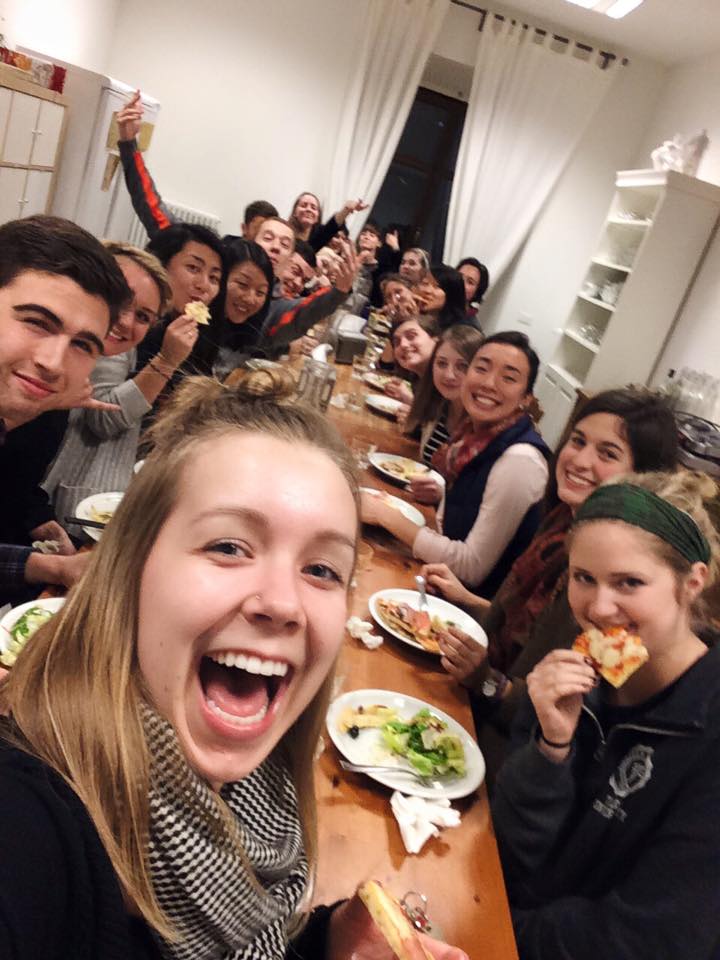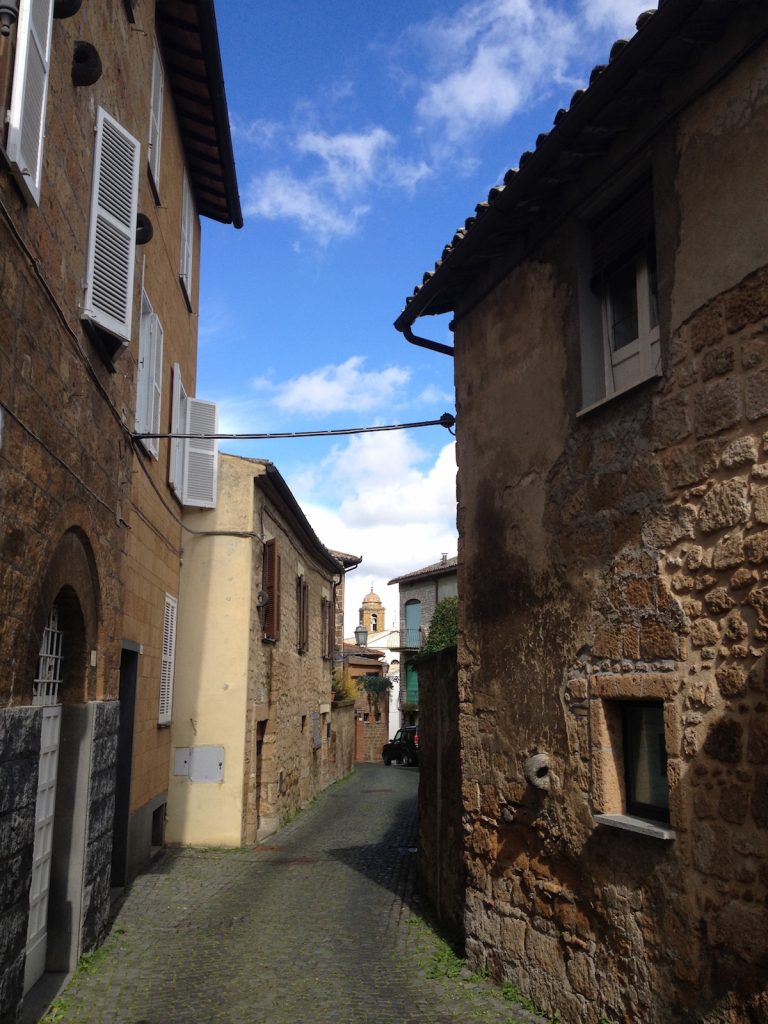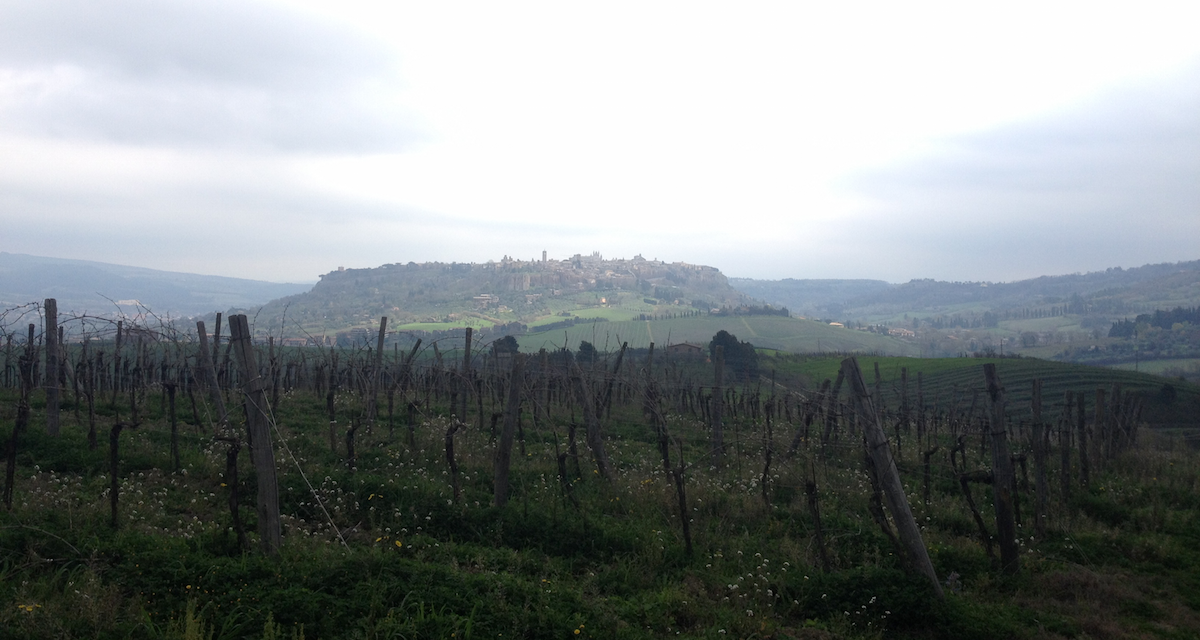Withdrawing to Gain Strength in Orvieto: One Student’s Reflections on a Semester Abroad
 Riposo. Read. Run. That was my afternoon routine in between the Benedictine pattern of class in the morning, chapter meeting with my 19 new sisters and brothers, followed by a grand pranzo together in the refectory of an old Italian convent. The shared space that once filled the hearts and stomachs of another near-familial community—the Servite nuns—would be visited again later for a lighter evening meal, cena.
Riposo. Read. Run. That was my afternoon routine in between the Benedictine pattern of class in the morning, chapter meeting with my 19 new sisters and brothers, followed by a grand pranzo together in the refectory of an old Italian convent. The shared space that once filled the hearts and stomachs of another near-familial community—the Servite nuns—would be visited again later for a lighter evening meal, cena.
After tidying up loose ends on coursework or playing Bananagrams or Sicilian orange peel toss at our refectory table, one could find the majority of our group in the humanities classroom/library for the hour and a half of allotted WiFi per day. We existed in a culture that wasn’t our own, supported by small bits of our home culture. Together we withdrew momentarily only to immerse ourselves again in the quintessential Italian hill town and the many characters who call it home.
Presence
Orvieto revealed itself to be an ideal academic, communal and spiritual environment. Through all of these ideals existed a tasteful aesthetic presence that could be described (though admittedly unjustly) as thoughtful, deliberate and reflective.
In Wenham, I rush from class to class engaging in a stimulating, yet fragmented form of learning. In Orvieto, I was able to slow down and sit with my studies, allowing the subject matter to resonate and even waft over me like a steaming cup of fresh espresso (which we enjoyed daily).
For me, Gordon IN Orvieto was the learning experience at the pinnacle of the liberal arts hierarchy. By taking just one course each month, we were able to fully invest in our time and work—a change of focus that mirrored the change of pace Orvieto offered.
Transformation
Though I’m not an art major, by the time the fourth and final week of my Disegno (design) class rolled around, I found it difficult to part ways. I didn’t want to just finish the course but continue exploring its intricacies, not to achieve a higher grade, but because I was sincerely curious.
This was especially true when I constructed an abstract art book for the course based on a short piece I wrote about a deserted block of buildings in Orvieto. My objective was to elevate these currently lifeless buildings to a form with potential energy, holding within it substance yet to be tapped into.
 The backside of the panels simply mirrored the different shades of orange that color Orvieto’s urban landscape. But it also served as a mechanism for beauty, highlighting the truth that there’s beauty and brokenness on a universal level, even in idyllic Italian hill towns like Orvieto. Perhaps Orvieto allowed me to transform the “work” into something more lasting—a vehicle to see the world, and all its good and bad, more clearly.
The backside of the panels simply mirrored the different shades of orange that color Orvieto’s urban landscape. But it also served as a mechanism for beauty, highlighting the truth that there’s beauty and brokenness on a universal level, even in idyllic Italian hill towns like Orvieto. Perhaps Orvieto allowed me to transform the “work” into something more lasting—a vehicle to see the world, and all its good and bad, more clearly.
Community
It’s a word used so often at Gordon that it can lose its vigor. No so in Orvieto. At the Convento di Servi di Maria, a renovated convent dated back to the turn of the second millennium A.D., a mosaic is formed. Twenty students from Christian colleges across the U.S., two former Orvieto program students-turned-RAs and TAs, humanities and art professors for each respective month and the pastoral program director all give life to one another, as the hill town around us pulses with energy.
Genuine presence proves to be the conductor of lives in concert with one another. We walked the streets that held the town together for centuries, meandered the paths that nestle along the tufa rock foundation, and gathered at the town’s centerpiece—the Duomo. And daily we withdrew to the place we called home, the convent, only to immerse ourselves in the town once again.
By Dan Simonds ’17, communication arts
 The Bell
The Bell